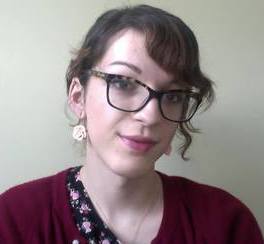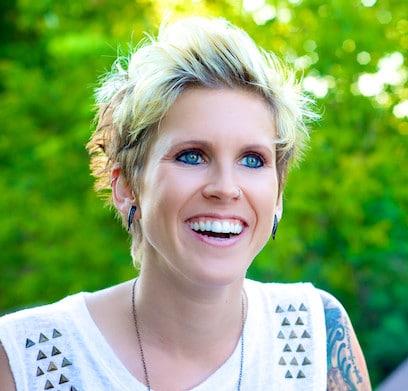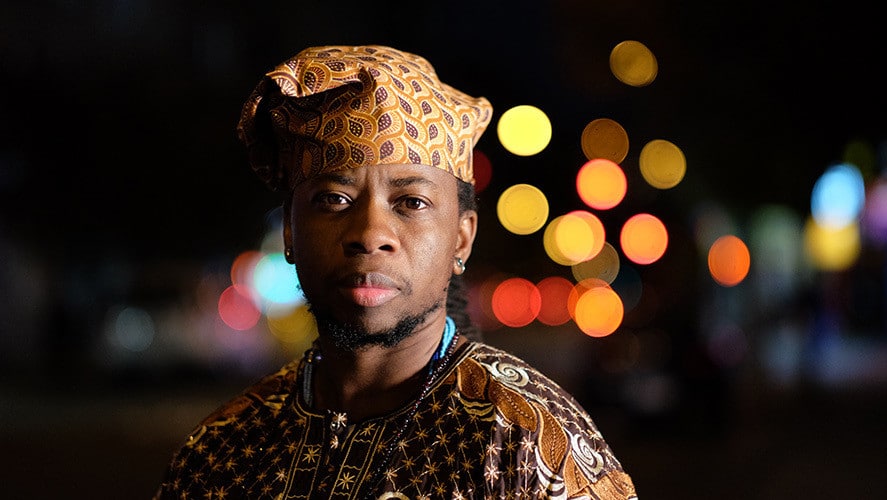When we discuss creativity with artists, the line is usually the same—that it arises from personal, interior spaces. No matter the medium they choose to operate in, the reality of an individual is articulated in their work.
This phenomenon creates a series of expectations about both the artist and their work. More often than not we expect that a female painter would create work about women, or their experience as a woman, or that a black photographer would attempt to mediate their experience as a black person through their images.
We spoke to four artists, all of whom identify as part of the LGBT community, about these expectations. Do they feel compelled to represent their identities through their work, whether through personal motivation or the pressures of an exterior audience? Do they feel a responsibility, as visible members of an often invisible or marginalized community, to discuss queer issues? Should we, as consumers, be compelled to read queerness into their work?





Adi Nes, Photographer
By its nature, art is created from a deep, internal place within the artist which is often connected to some pain or significant experience. Despite the fact that art can be therapeutic, that’s not usually its intention; it’s an added value. For me, my responsibility as an artist is first and foremost to create good art. At the beginning of my artistic career, many years ago, issues of sexuality and gender were suppressed (by me, and by the society in which I live and work). Perhaps as a response, I began dealing with this issue a lot. Homosexuality was also a significant, unresolved, turbulent, exciting, disquieting and even painful part of my personality, therefore I expressed it in my art. It didn’t come as a choice from some feeling of responsibility to make a political statement; it was simply a personal statement. Over the years, I matured and developed, as has my art. The issue of sexuality is one layer in my art, but it does not overpower it—just as my personal identity is composed of a combination of identities. I express it because it is a reflection of me, because I cannot not express it, but not as some sort of political statement.
The beauty of art is that every person understands it in a different way. There are those who view Mapplethorpe’s flowers and only see flowers. Others see provocative images in them. There are those who look at the soldiers I photographed who say this is just a typical Israeli experience, and another may be moved by the homoerotic lighting which illuminates them. When a person looks at a work of art, that person can choose to look at it from a certain point of view. The elements which are drawn by that person from the art are, naturally, connected to the angle at which the art is viewed. The question of how significant a certain layer is depends on the angle from which it was viewed. The interpretation one gives to art can highlight something about the art, yet from the beginning of psychiatry decades ago, it’s been clear that interpretations reflect much about the interpreter (what the interpreter projects on the art). Such is with abstract art, but also regarding realism and photography—especially when the art touches upon sexuality.

Catherine Graffam, Fine Artist
I don’t necessarily believe there should be a responsibility for queer people to create art that is openly representing queerness. I believe that there is an expectation among queer artists to solely make art about their queerness, and their art will be seen as queer first. That box can be very confining and the full depth of their work may not be realized because people do not delve into the nuances. However, I personally feel a responsibility to communicate my experiences as an intersex trans woman and advocate through art, which is partly why most of my work are self-portraits. Art may not be the most direct and effective means of advocating, but I think it has the capability to bring deeper understanding of queerness to those who may not necessarily understand it. I also feel a responsibility because of what the queers who came before me sacrificed in order for me to have the privileges I have today, and using those privileges to further benefit other queer people. My goal as an artist is to be a beacon for other trans people, especially trans women since I have struggled finding many trans women artists to aspire towards, and none that I felt occupied the same art realm as myself.

Jackie Skinner, Musician
I write, play guitar and sing in a country rock band called Skinner. My sister and I write songs that come out of our real experiences and we try to make them universal for our audience. I don’t feel a specific responsibility to represent my sexuality but I represent my whole self and try not to hold back my emotions or experiences when writing. We don’t use pronouns in our songs, so we aren’t limited to singing a song to a girl or guy. The experiences we write about are frequently about love, loss and having a good time. It’s not a political statement in any way—so I’m not under pressure to represent the LGBT community. I mostly try to get people to have a good time and enjoy themselves, so being inclusive to everyone’s sexuality is important.
I feel like most people can read my sexuality when I’m on stage. I’m in the music industry and paired with my image, I think most people are quick to see me for who I am. Often when I am on stage, I will tell the crowd that my wife is there—at those times, the audience may be picturing me singing to her. If I do recognize there is an LGBT presence in the audience, I am even more inclined to tell people so that they feel like I’m their ally and that they are in a safe space. I really want people to enjoy themselves—that’s what music is about. I try to be considerate to every environment I’m in. If I’m playing a show with my cover band at a corporate event, I may not be telling everyone about my sexuality because I don’t feel like it’s relevant.

Seyi Adebanjo, Filmmaker
My art practice is built upon the foundation of my cultural heritage, ritual, political histories and hybrid identities. As a Queer gender-non-conforming Yorùbá Nigerian media artist, my politics are infused in my work. My art communicates with a distinct voice on many themes: gender fluidity, Queerness, spirituality, “Womyn” of Color, immigration, Trans* People of Color, white privilege and white supremacy. For me, it’s important in the creation of work to make sure the intersectionality of my/the characters/communities identities are represented. I can’t discuss or portray sexuality without exploring race, class and gender representation. My sexuality and the sexuality of communities do not exist in isolation. My work, my body, my sexuality, my politics and other people who look like me are viewed through a white gaze and it’s important I construct the narrative around representation and visibility.
Institutional oppression and other factors make it imperative for me to frame the dialogue when it comes to Queer & Trans* People of Color, especially immigrants. Representation matters. Seeing myself and my community visualized is significant and I want to do it with humanity, dignity and power.
I don’t think artists should shy away from representing their Queerness in their work. It serves our world when people make “Queer and Brown work,” and are able to show the full complexities of our experiences and lives. We all have the critiques of how dominant culture usually shows heterosexist, homophobic and racist depictions of the Queer and Trans* community. Representing art that breathes life from our perspectives creates a space for us to thrive and hopefully counter those other narratives. People want and need these stories through all art forms, so let’s feed our audience in a conscious and responsible way.











